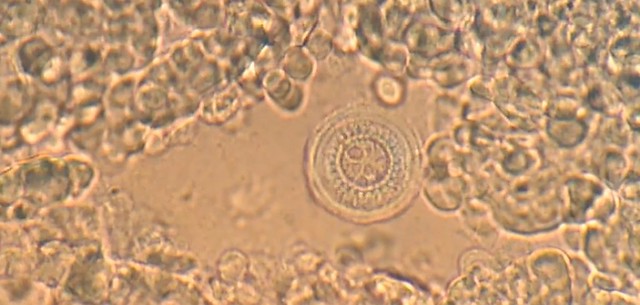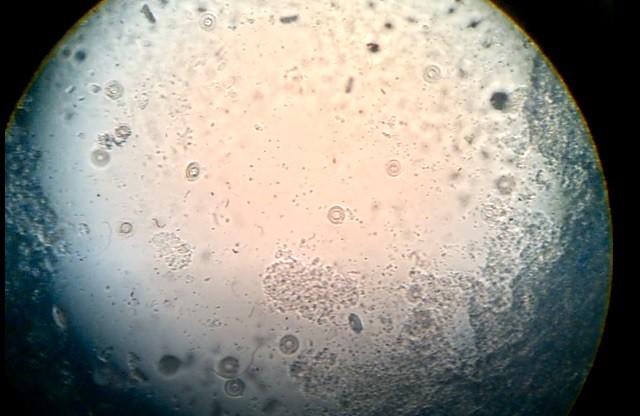Trichodina
It is the most beautiful parasite there is, although it does not really make you happy. They are compared to UFOs or razor heads and move gracefully through the smear of a mucous membrane, viewed through a microscope. After all, they are not visible to the naked eye. It is a single-celled parasite, which has hairs around it to move around, called ciliates. The question is: how do you get it and how do you get rid of it?

How you get it is difficult to say and that can differ per pond and Koi. It is often a combination of poor water quality, with reduced resistance. In the spring you hear that many hobbyists curse this parasite. A Koi always carries some Trichodina with it. But if they start to multiply quickly and the Koi start to show other behavior, such as rubbing, you may have to treat them.

Then you stand at a Koidealer and look at the pesticide shelf. You will find out that there is quite a choice of products that combat Trichodina. Explain your situation to the dealer and then choose the best remedy (read: least bad). Especially products with formalin in combination with malachite green or products based on potassium permanganate are widely used against Trichodina.
There are a total of about 40 species that look almost the same. There is also a ‘smaller sister’ called Trichodinella. The small edition of this family is a bit more persistent and difficult to control,
Name: Trichodina
Type: Protozoa, cilliate (single-celled with cilia)
Multiplication: Cell division
Size: 50-70 microns
Magnification microscope: 40x-100x is sufficient
Cause of outbreak: Poor water quality, stress, overpopulation, poor immune system of the Koi.
Symptoms: abnormal behavior such as fin pinching, jumping, chafing.



